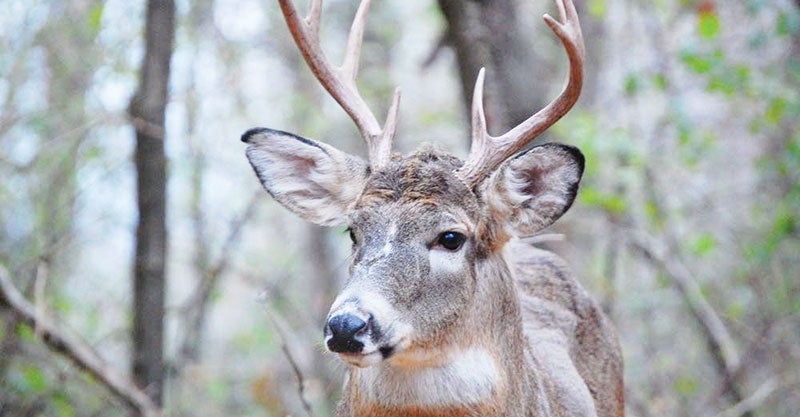DNR intensifies CWD response efforts in southeastern Minnesota
Published 7:14 am Tuesday, December 4, 2018

- A whitetail buck in a Twin Cities park. MPR News/Tim Post
Late-season hunts, post-season deer culling among steps planned
The Minnesota Department of Natural Resources is taking additional steps to help limit the spread of chronic wasting disease in wild deer in southeastern Minnesota.
Eleven new cases of wild deer infected with the neurological disease were discovered this fall in or around the CWD disease management zone in Fillmore County.
In response, the DNR will open two special hunts in December, provide shooting permits to landowners, conduct deer culling efforts in January, and will hold a public meeting in Preston on Dec. 18.
Lou Cornicelli, the DNR’s wildlife research manager, said the CWD-positive cases indicate that the disease is persisting in this area and the DNR needs to act quickly to contain the disease while it is relatively concentrated in a geographic area.
“The last thing people want is an established disease in their backyards,” Cornicelli said. “States that have CWD established in their wild deer populations have seen declines in both deer populations and deer hunter numbers. We’ll continue to do what we can to avoid that situation here.”
The disease management zone was established by the DNR in 2016 after CWD was discovered in wild deer near Preston. The zone has an approximately 10-mile radius around Preston.
To date, there have been 28 detected cases of the neurological disease within the CWD disease management zone, 11 of which were detected this fall. While the majority of positives remain within the disease management zone, discoveries of the disease just outside of the boundary are consistent with expected movement of bucks, which tend to travel alongside rivers during the breeding season.
CWD is an always-fatal neurological disease that affects the cervid family, which includes deer, elk and moose. It is spread through direct contact with an infected deer’s saliva, urine, blood, feces, antler velvet or carcass. There is no vaccine or treatment for this disease.
Cornicelli said managing CWD is challenging because of how it spreads and persists in the deer population.
To help combat CWD in southeastern Minnesota, the DNR will:
• Open two separate, three-day deer hunts in December in and around the disease management zone. Details of these late-season hunts and boundaries will be available Tuesday, Dec. 4, on the DNR website at mndnr.gov/cwd.
• Provide shooting permits to landowners interested in removing deer from their property. DNR staff will reach out directly to landowners within the CWD management zone with information about that program.
• Conduct targeted culling starting in mid-January. The DNR will work with local landowners and coordinate with the U.S. Department of Agriculture to remove deer from areas where CWD-positive deer were found.
Final CWD test results and preliminary findings from the DNR’s ongoing research on deer movement in southeastern Minnesota will affect how the DNR manages the disease going forward, according to officials.
DNR researchers will also be surveying hunters and landowners throughout southeastern Minnesota. The study’s goal is to measure attitudes toward the disease and DNR management and to measure support for potential management actions, including providing incentives to hunters and landowners to help curb disease spread.
The DNR will also have a public meeting in Preston to provide information about CWD and the DNR’s management response to its discovery. The meeting will be from 7-8:30 p.m. on Tuesday, Dec. 18, in the Fillmore Central School Auditorium at 702 Chatfield St.
DNR staff will explain the CWD efforts to date and how the current response is designed to limit its spread. They will also discuss response measures including the disease management zone, special late-season deer hunts, landowner shooting permits, targeted culling and snow-dependent aerial deer survey.
Hunters can find CWD test results of deer tested through mandatory surveillance, as well as locations of positive test results and statistics, at mndnr.gov/cwdcheck. More information about CWD can be found on the DNR’s CWD page at mndnr.gov/cwd.
While there is no evidence that humans can contract CWD, the Centers for Disease Control recommends testing your deer for CWD. CDC recommends not eating meat from a known positive animal. For more information, please visit the CDC website at cdc.gov/prions/cwd.

